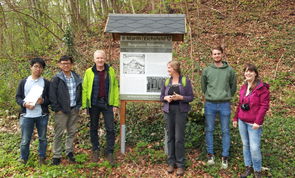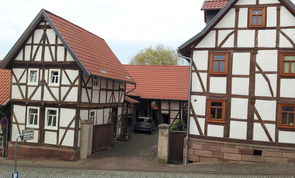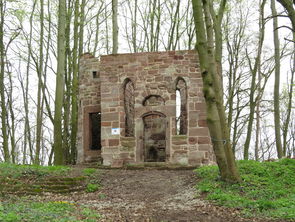Cultural landscape analysis and landscape development on the Rusteberg near Marth (Eichsfeld)
Quiet, historically and scenically very attractive as well as a bit sleepy, that's how the place Marth and especially the Rusteberg can be described. Both are located in the Eichsfeld near Heiligenstadt in northwest Thuringia. Once the focal point of the Kurmainz administration and "guardian of the Eichsfeld" in the Middle Ages, the striking mountain cone lingers in a slumber due to poor tourist development and the lack of adequate processing and representation of the historic past.
The historical cultural landscape elements located on and around the Rusteberg near Marth, however, represent an important cultural asset that is closely linked to the history of Marth, the Rusteberg and the history of the Eichsfeld and has a lasting impact on the landscape of this region. Grown cultural landscapes and cultural landscape elements establish the regional identity and the feeling of home of the local population. With their diversity, uniqueness, beauty and their special experience value, they influence the attractiveness of the region as a living, working and recreational space and are therefore an important location factor. It is therefore important to preserve these elements.
The aim of this study project was to determine, analyze and describe particularly formative elements of the cultural landscape and to design a concept for tourism development in which the focus is on the experience and valorisation of the historical heritage.

(photo: H.-H. Meyer)


(photo: K. Haschke)

(photo: H.-H. Meyer)
Text und maps:
- Master Studienarbeit Rusteberg .pdfText of thesis
- Karte 1 Bodennutzung Marth.pdfLand use Map
- Karte 2 Biotope und Schutzgebiete.pdfBiotops and Protected areas
- Karte 3 Flurstuecke und Flurnamen.pdfParcels and field names
- Karte 4 Kulturlandschaftselemente.pdfCultural landscape elements